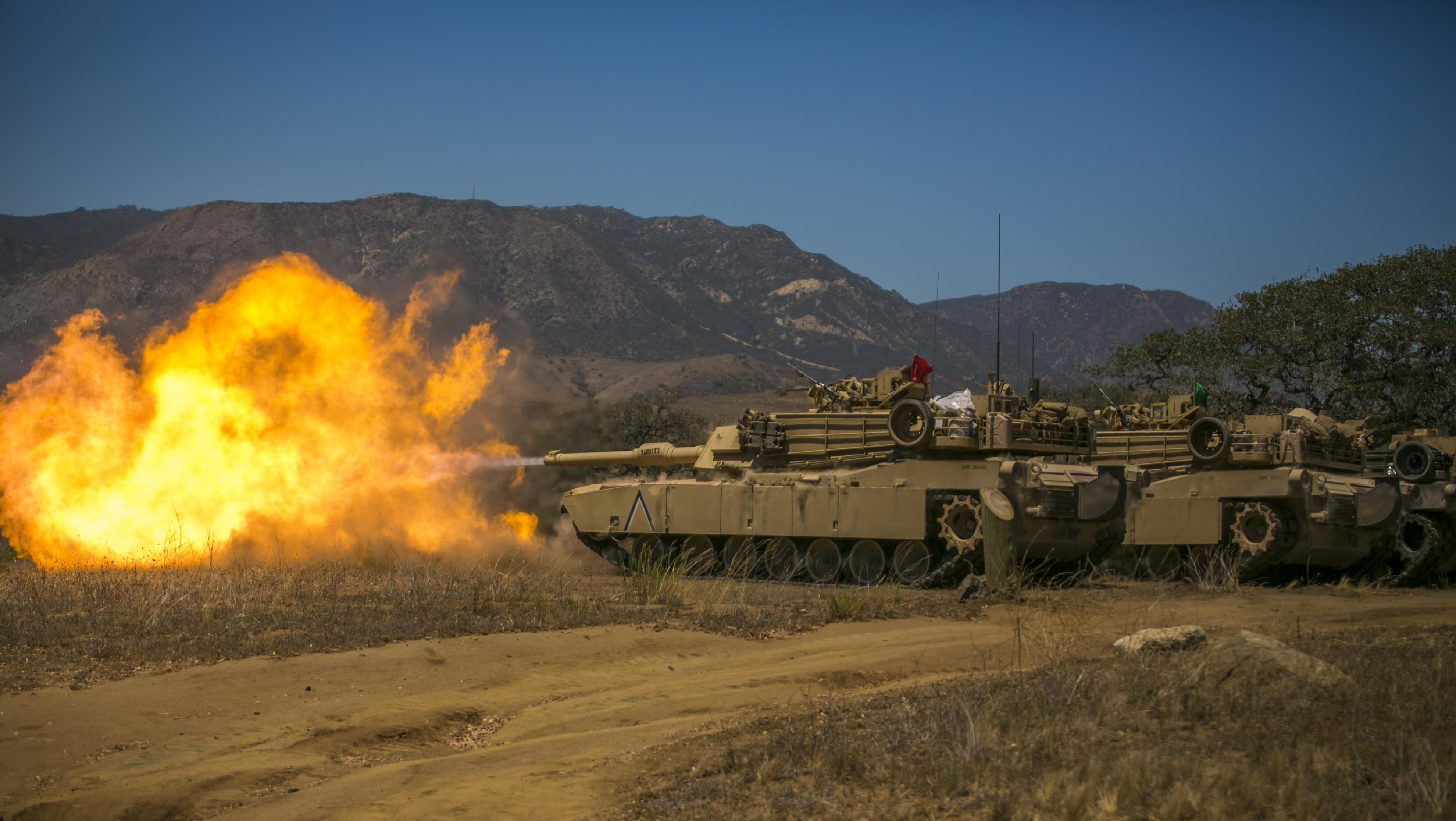The Marines Corps is upgrading its M1A1 tanks so that gunners can program when 120 mm main gun rounds detonate.
“It puts several ammunition capabilities into a single round,” said Lt. Col. Mark Braithwaite. “Given the logistics challenges of carrying multiple types of unique rounds for unique applications, having a round that can handle more than one type of target is particularly advantageous.”
Some Marine tanks already have a version of the system, and all of the Corps’ roughly 400 tanks will get newer ammunition datalinks in 2020, said Braithwaite, team lead for tank systems at Marine Corps Systems Command.
RELATED

Using a console, gunners can program Multi-Purpose High Explosive rounds to detonate on impact, explode after a delay or airburst, he said. That way, one type of tank round can be used against enemy armor or infantry, depending on when it explodes.
“The airburst is specifically an anti-infantry capability,” Braithwaite said.
The Army’s tank fleet includes variants of the M1A2 Abrams tank, which has been produced since 2005, but the Marine Corps has no plans to acquire the newer tanks, he said. Corps officials are committed to making sure the M1A1 is still relevant on the battlefield.
Toward that end, the Corps will begin adding new front and side armor to all of its M1A1 tanks starting in fiscal 2019, said Braithwaite, who could not discuss what the new armor’s capabilities are or what types of threats it is designed to defeat.
Unlike recent upgrades to the Marines’ tanks, the new armor was not inspired experiences in Iraq, he said.
It is expected to take about 15 years to add the armor to the Corps’ tanks because the armor is best added when tanks are completely rebuilt at the Anniston Army Depot in Alabama, he said.
“Fifteen years is not set in stone because there are a lot of contributing factors to that,” Braithwaite said. “The modification is going to be applied as we rebuild tanks, and those numbers can change based on funding how many tanks we do per year.”





